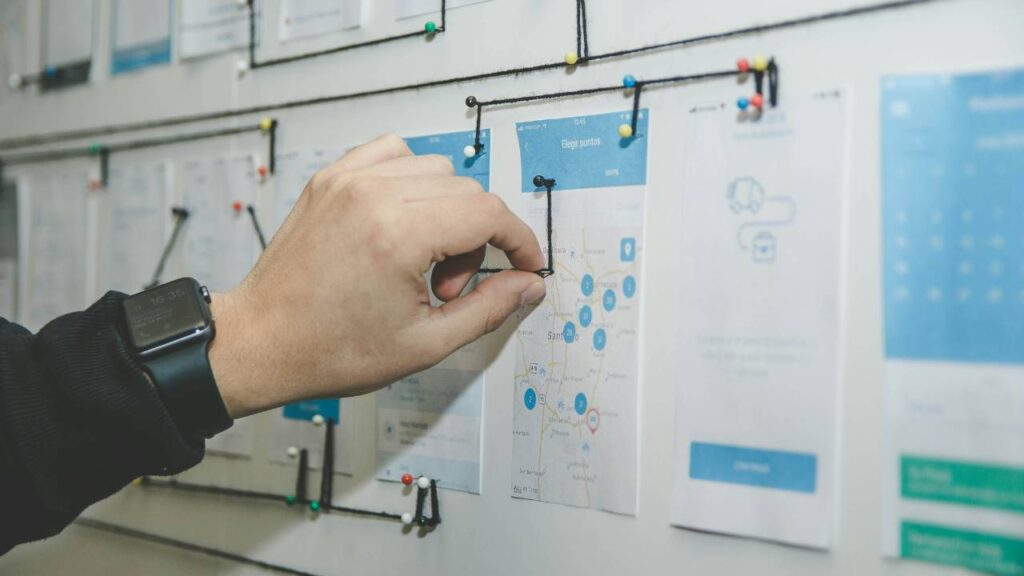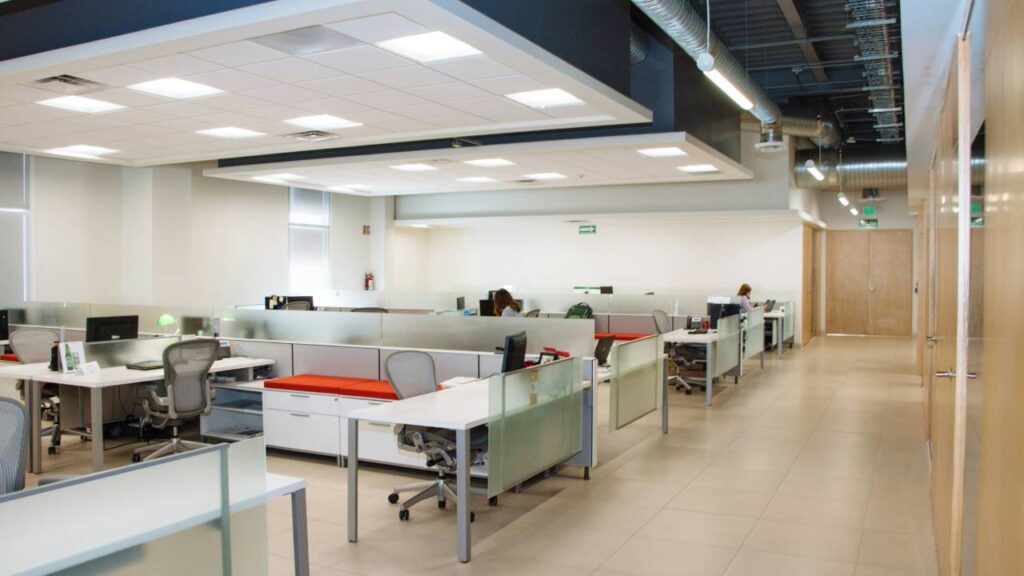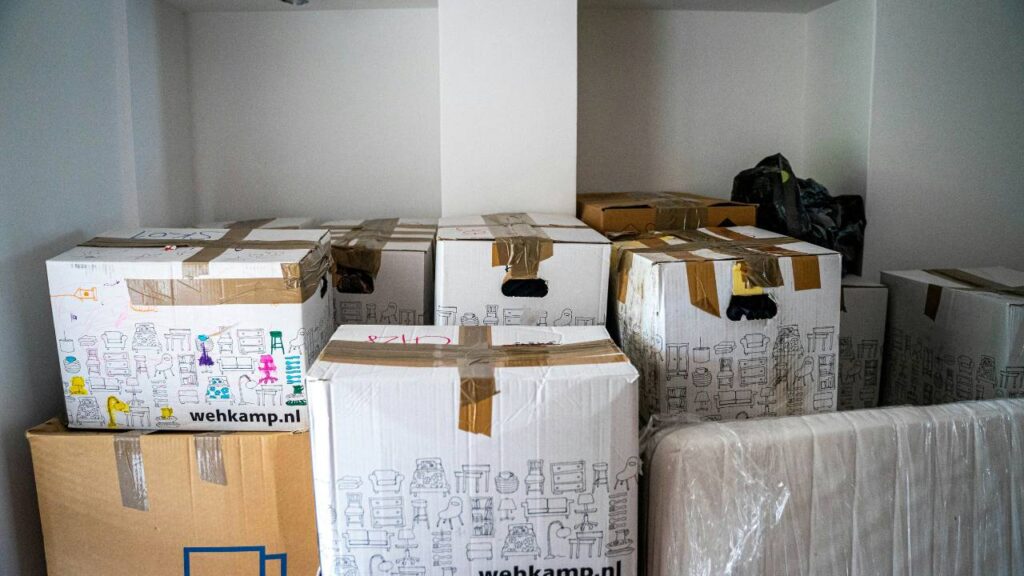
Relocating your business with ease requires meticulous planning, but the benefits significantly outweigh the challenges. An efficient office relocation can boost productivity, streamline operations, and foster a fresh start for your team. By creating a detailed relocation plan, you can ensure a seamless transition that minimises disruptions to your business activities.
Effective planning is the cornerstone of a successful office relocation. Begin by establishing a timeline that outlines key milestones and assigns responsibilities to team members. Clear communication with your staff about the relocation timeline and their roles can prevent confusion and ensure everyone is prepared for the move.
Assess your current office setup and determine what works well and what doesn’t. This evaluation will guide your decisions on the new office layout and infrastructure needs. Careful consideration of these aspects can lead to a more functional and comfortable workspace, ultimately benefiting your business in the long run.
Understanding the Why Behind Your Move
Identifying the reasons behind your office relocation is essential for a smooth transition. Your motivation for moving could be related to business growth, expansion plans, or the need for a more suitable location.
Assessing Business Needs and Growth
Evaluate whether your current space supports your business operations. If your company has experienced growth or expansion, you may need a larger office to accommodate the increased workforce and activities.
Consider the need for modern office facilities. This could mean moving to a location that offers better amenities or aligns with the hybrid work model. Having the right space can enhance productivity and employee satisfaction.
Think about the strategic benefits of your new location. Proximity to key clients, partners, or a more vibrant business district can influence your decision. Prioritising the best environment for your team and business growth is key.
Creating a Comprehensive Office Relocation Project Plan

When planning an office relocation, it’s crucial to develop a well-structured project plan that includes a detailed timeline, assigned responsibilities, and an effective communication plan. These steps will ensure a smoother transition and minimise disruptions.
Establishing Your Timeline
Your timeline is a critical part of the relocation project plan. Start by determining your ideal move-in date, then work backwards to map out key milestones. Consider activities such as sourcing moving companies, packing, notifying clients, and setting up the new office. It’s essential to allow enough time for each task. For example, booking a moving company should be done several months in advance. Ensure there are buffer periods for unexpected delays.
Designating Responsibilities and Teams
Assigning clear roles and responsibilities to your team members is vital. A project manager should lead the effort, overseeing the entire move. Designate specific teams for various tasks such as IT, packing, and setting up the new space. Create a checklist detailing each team’s responsibilities. Ensure each team knows their deadlines and what’s expected of them. Regular check-ins can help track progress and address any issues promptly.
Developing a Communication Plan
An effective communication plan ensures everyone involved is informed and aligned. Start by identifying your key stakeholders, including employees, clients, and service providers. Use various channels like emails, meetings, and notice boards to share updates. Your communication plan should include a schedule of what information needs to be communicated and when. Ensure there’s a way for employees to ask questions and receive prompt answers. This keeps everyone on the same page and reduces confusion.
Setting a Realistic Budget
Planning a financial strategy for your office move is pivotal. Ensure you account for both the expected expenses and any unforeseen costs.
Calculating Moving Expenses
Start by listing all moving expenses. Request quotes from multiple moving companies. Include packing materials, transportation, and insurance for your items. It helps to get detailed quotes to avoid underestimating costs.
Factor in expenses like temporary storage if your new office isn’t ready immediately. Also consider the costs of professional services such as IT setup or interior design. It’s critical to keep a clear and updated record of all these quotations.
Office relocation might require new furniture or equipment. Estimate how much you’ll spend on replacing or upgrading necessary items. Keep in mind the disposal costs for unwanted office equipment. Plan effectively to manage your finances without overspending.
Anticipating Unexpected Costs
Surprises can arise, so setting aside a contingency fund is prudent. Aim to allocate about 10-20% of your total budget to cover unexpected costs. This can include last-minute repairs, additional labour charges, or any unforeseen logistics issues.
Communication is key. Engage with your moving company to discuss potential extra costs. They can provide insights based on their experience with other relocations.
Additionally, consider possible downtime when your business might be less operational. Factor in a budget for any loss in productivity. Being prepared for such scenarios ensures your relocation is smooth without causing financial strain.
Planning ahead helps maintain control over your finances, making your office relocation efficient and worry-free.
Selecting the Right New Office Space

Choosing the right office space is crucial for the productivity and well-being of your team. Consider important aspects such as the location, available amenities, and the specific terms and conditions of the lease.
Considering Location and Amenities
The location of your new office space can significantly impact your business operations. Ensure it is conveniently accessible to your team and clients. Proximity to public transport, parking facilities, and key amenities like banks, restaurants, or gyms can enhance the daily experience for everyone.
The availability of essential amenities within the office space is also critical. Look for facilities such as high-speed internet, well-maintained common areas, meeting rooms, and kitchen spaces. A serviced office may offer additional amenities such as reception services, mail handling, or on-site maintenance.
Pay attention to the security of the area as well. A safe and secure location contributes to the overall sense of well-being for your employees. Assess the security features of the building, such as surveillance cameras, security personnel, and access control systems.
Evaluating Lease Terms and Conditions
Scrutinise the lease terms to ensure they align with your business needs and objectives. Understand the duration of the lease and flexibility for renewals or early termination. A shorter lease might offer adaptability, while a longer lease can provide stability.
Consider the costs associated with the lease, including rent, deposit, and any additional charges. Be clear on what expenses are covered within the lease and what will be billed separately. This helps avoid unexpected costs that could strain your budget.
Read through the contract meticulously to identify any clauses related to maintenance responsibilities, restrictions on modifications, and shared spaces’ usage. Some shared office spaces might have specific rules about using common areas or facilities, so be sure you are comfortable with these terms.
Lastly, always discuss any uncertainties with the landlord or a legal advisor to ensure there are no hidden pitfalls. This step helps safeguard your interests and ensures a smooth transition to your new office space.
Coordinating with Service Providers
Efficient office relocation involves not only physical movement but also setting up essential services such as IT infrastructure and hiring the right moving company.
IT Infrastructure and Tech Setup
Coordinating with vendors for IT equipment, servers, and phone systems is crucial. You should contact your internet and phone service providers well in advance to schedule the disconnection and reconnection of services at the new location. Ensure all computer and network equipment is carefully packed and labelled.
It’s essential to create a detailed inventory of your tech equipment. Back up all important data and confirm your new office has the necessary cabling and ports for a smooth transition. Make arrangements for on-site or remote support to address any technical issues that may arise during the move.
Hiring a Professional Moving Company
Choosing a reliable office moving service – like Halton office removal service – can make a significant difference. You should verify their credentials and read customer reviews to ensure they have experience with office relocations. Discuss your specific needs, from handling delicate equipment to moving bulky furniture.
Obtain and compare quotes from multiple companies to find the best fit for your budget and requirements. Make sure to clarify their insurance and liability policies. Establish a timeline with the movers to synchronise with other service providers, ensuring minimal disruption to your business operations.
Preparing for the Physical Move
Efficient packing and inventory management are essential to avoid misplaced items during the move. Additionally, thoughtful consideration of furniture and interior design will ensure a smooth transition.
Packing and Inventory Management
Start by creating a detailed inventory list of all items. Prioritise packing non-essential items first and clearly label each box with its contents and designated room. Use a numbering system or colour codes to make unpacking more straightforward for everyone involved.
Involve your IT department early in the process, especially when dealing with office equipment. Ensure that all electronic devices are properly backed up and prepared for safe transport. Packing computers, printers, and other equipment with adequate protective materials is crucial to prevent damage.
Consider temporary storage solutions for items that won’t be immediately needed. Store important documents in labelled, easily accessible boxes so they can be located quickly once you’ve moved into the new office.
Furniture and Interior Design Considerations
Assess all existing furniture to determine what can be moved and what might need to be replaced. Measure the new office space accurately to ensure that all pieces will fit appropriately. This is the time to think about ergonomic furniture options and design improvements.
Plan the layout by considering the most efficient use of the new space. Think about the placement of workstations, meeting rooms, and communal areas. Collaborate with an interior designer if possible to ensure a functional and appealing workspace.
Don’t forget to address additional storage needs. Built-in storage solutions can help maintain a tidy and organised office. Have a clear idea where any extra furniture or design elements will go, keeping in mind both functionality and aesthetic considerations.
Managing Move Day and Beyond

Moving day and the days that follow are crucial for maintaining business operations and ensuring a smooth transition into your new office environment.
Ensuring Business Continuity
To minimise disruptions, keep essential operations running smoothly by appointing a dedicated move coordinator who communicates with employees and customers about the move. This person ensures that everyone knows their responsibilities and timelines.
Use cloud storage and remote work solutions to continue business activities without interruption. Prioritise setting up internet connections and IT systems as a top priority. You want to maintain access to essential business applications and tools. Coordinate with your IT team to perform checks and troubleshoot immediately after moving day.
Inform your customers well in advance about the relocation. Maintain open communication channels, such as updating your website and sending out emails to assure them of continued service.
Unpacking and Settling In
Once in the new space, start by unpacking critical equipment and setting up common areas like meeting rooms and break zones. A well-organised space helps employees feel comfortable and productive. Assign specific teams or individuals to handle different areas of unpacking to speed up the process.
Encourage employees to personalise their workstations. This small step goes a long way in boosting employee satisfaction. Make sure to regularly clear any lingering moving boxes and packing materials to foster a neat office environment.
To help employees adapt, consider hosting a welcome event or meeting to familiarise everyone with the new surroundings. Provide maps or directories of the new office to help everyone navigate the space efficiently.
Post-Move Review and Optimisation
After relocating, it’s essential to evaluate the move and make necessary adjustments to optimise the new office space and ensure employee satisfaction. This involves gathering feedback, reflecting on lessons learned, and addressing any post-relocation challenges.
Gathering Feedback and Lessons Learned
Once the move is complete, gather feedback from employees to pinpoint what went well and areas needing improvement. Use surveys, meetings, and informal conversations to collect input on the relocation experience.
Focus on identifying challenges faced during the move, such as any issues with communication, coordination, and execution. Analyse the responses to understand their impact on employee satisfaction and productivity. Learning from this feedback helps you refine future relocation strategies and provides insight into how to enhance the work environment.
Document all lessons learned to create a comprehensive guide for future moves. This will help you avoid repeating mistakes and leverage the effective strategies used during this move.
Addressing Post-Relocation Adjustments
Post-relocation, it’s crucial to ensure the new office space is safe, productive, and conducive to employee well-being. Address any immediate physical adjustments needed, such as fixing dilapidations or modifying the office layout for better functionality.
Security is paramount. Ensure access controls, surveillance systems, and emergency protocols are in place and effectively communicated to all staff. Check out our ultimate security blueprint for businesses for detailed guidance on securing your new premises.
Additionally, help employees settle into the new environment by providing resources and support. This can include orientation sessions, maps of the new office layout, and assistance with setting up workspaces. By addressing these adjustments promptly, you foster a smooth transition and boost overall employee satisfaction in the new office.
Conclusion
Planning an office relocation doesn’t have to be a stressful experience. With the right steps, you can ensure a smooth transition for everyone involved.
Begin by creating a detailed timeline and checklist. Assign responsibilities so every team member knows their role. This keeps things organised and efficient.
Make sure to communicate regularly with your team and moving company. Keeping everyone informed will help avoid any last-minute surprises.
Don’t forget to update your clients, suppliers, and service providers about the move. They need to know your new contact details and any changes in operations.
Label all boxes clearly and keep an inventory of items. This will make unpacking much easier and quicker.
Lastly, take care of your employees’ needs. Provide them with support and resources to help them adjust to the new environment. Make the move a positive experience for everyone.

